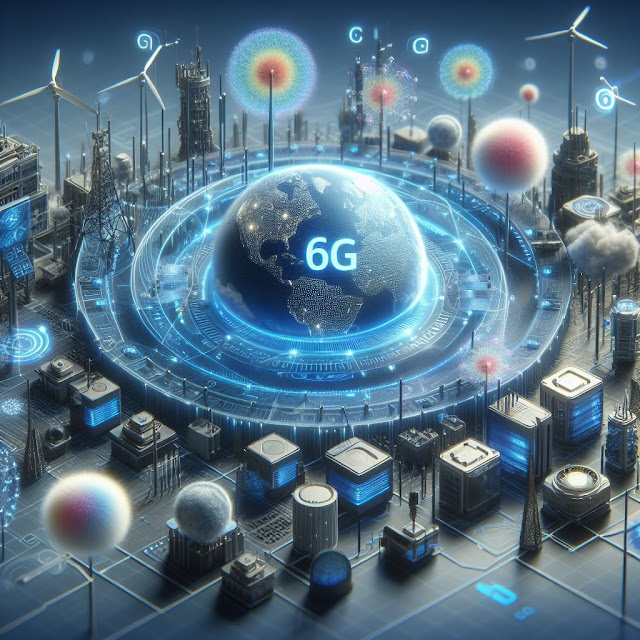The Evolution of Connectivity: 5G Vs 6G Networks
The Evolution of Connectivity: 5G Vs 6G Networks
As technology continues to advance at an unprecedented pace, the world of telecommunications is on the brink of a major transformation with the development of 6G networks. While 5G has already ushered in a new era of connectivity, the prospect of 6G opens up a world of possibilities that were once unimaginable. In this blog post, we will explore the key differences between 5G and 6G networks, as well as the potential impact of 6G on various industries and everyday life.
Understanding 5G Networks 🚀🚀
Before delving into the world of 6G networks, it is important to understand the capabilities and limitations of 5G technology. 5G networks have been lauded for their significantly faster speeds, lower latency, and greater capacity compared to their predecessors. These advancements have paved the way for innovations in areas such as autonomous vehicles, virtual reality, and the Internet of Things (IoT), revolutionizing the way we interact with technology on a daily basis.
The Limitations of 5G Networks 🚀🚀
Despite the significant improvements that 5G has brought to the table, it is not without its limitations. One of the most pressing issues with 5G technology is its reliance on a dense network of small cells, which can be challenging to deploy in rural and remote areas. Additionally, concerns have been raised about the potential health risks associated with prolonged exposure to the higher frequency radio waves used in 5G networks.
The Promises of 6G Networks 🚀🚀
As the next frontier in wireless connectivity, 6G networks promise to build upon the foundation established by 5G and push the boundaries of what is possible in the realm of telecommunications. With projections of speeds up to 100 times faster than 5G, ultra-low latency, and the ability to support a massive number of connected devices, 6G has the potential to bring about a paradigm shift in how we utilize technology.
Key to the advancements of 6G networks is the utilization of terahertz frequency bands, which can support significantly higher data rates compared to the millimeter-wave frequencies used in 5G. This opens up a world of possibilities for applications such as holographic communications, advanced augmented reality experiences, and seamless integration of AI and machine learning algorithms into everyday devices.
The Impact of 6G networks on Industries 🚀🚀
The potential impact of 6G networks extends far beyond simply providing faster internet speeds. In industries such as healthcare, 6G could enable remote surgeries and real-time monitoring of patients with unprecedented precision. In the realm of transportation, 6G could lead to the widespread adoption of autonomous vehicles with instantaneous communication between vehicles and infrastructure. Additionally, 6G has the potential to revolutionize the way we interact with smart cities, energy grids, and environmental monitoring systems.
The implications of 6G networks go beyond the realm of industry and technology, with potential social implications that could reshape our daily lives. From revolutionizing the way we communicate with one another to opening up new avenues for virtual and augmented reality experiences, the possibilities are endless. However, it is crucial to consider the ethical and privacy implications of 6G, as the increased connectivity and integration of technology into everyday life will undoubtedly raise new concerns.
Overcoming the Challenges of 6G Implementation 🚀🚀
While the promise of 6G networks is undoubtedly exciting, it is important to acknowledge the challenges that will need to be overcome in order to bring this vision to fruition. One of the biggest hurdles will be the massive investment required to build out the infrastructure necessary to support 6G networks, as well as the development of new technologies and standards. Additionally, ensuring that 6G networks are secure and resilient against potential cyber threats will be of utmost importance.
As the potential of 6G networks becomes increasingly apparent, countries around the world are racing to establish themselves as leaders in the development and implementation of 6G technology. Nations such as China, the United States, and South Korea have already made significant investments in 6G research and development, with the goal of gaining a competitive edge in the global telecommunications landscape. The outcome of this race could have profound implications for the geopolitical power dynamics of the future.
Looking Towards the Future
Looking Towards the Future 🚀🚀
While the widespread deployment of 6G networks is still several years away, the potential impact of this revolutionary technology is already sparking excitement and speculation. From redefining the way we interact with technology to unlocking new possibilities across a wide range of industries, the evolution from 5G to 6G represents a pivotal moment in the history of telecommunications.
In conclusion, the development of 6G networks represents a leap forward in our ability to connect, communicate, and innovate. As we look towards the future, it is crucial to consider the potential benefits and challenges that 6G will bring, and to ensure that its implementation is guided by ethical considerations and a commitment to improving the lives of people around the world.
- Security: Cisco ASA Vs Cisco FTD - The Network DNA
- Site-to-Site VPN: IPSEC Tunnel Between an ASA and a Cisco IOS Router
- Cisco Security: Cisco ASA 5505 Interfaces configuration for Access Ports
- Cisco Security: Cisco ASA 5505 Interfaces configuration for Trunk Port
- Cisco ASA Series 1: Restoring the ASA to Factory Default Configuration
- Cisco ASA Series 2: Configuring NAT
- Cisco ASA Series 3: Easy VPN Remote
- Cisco ASA Series 4: Configuring VLANs and Sub interfaces
- Cisco ASA Series 5: Configuring Threat Detection
- Site to Site IPSec VPN Tunnel between Cisco ASA and Palo Alto Firewalls












